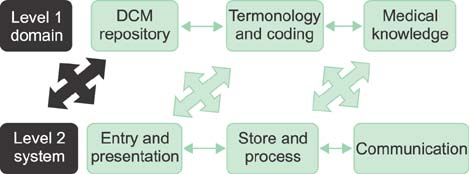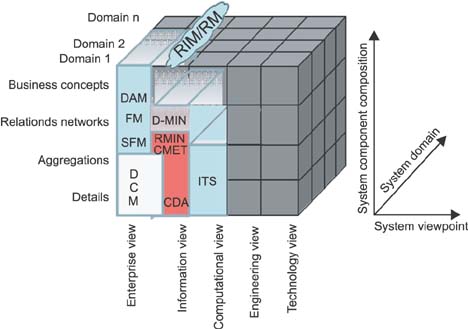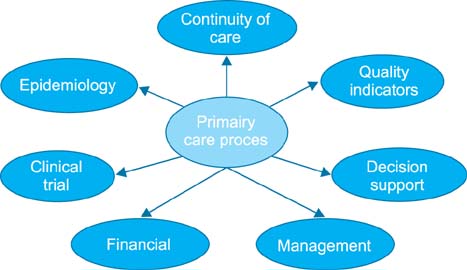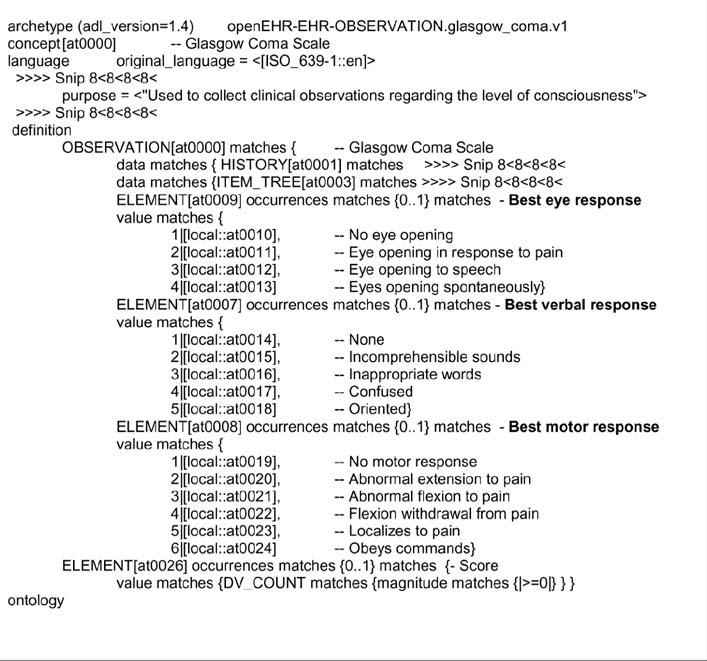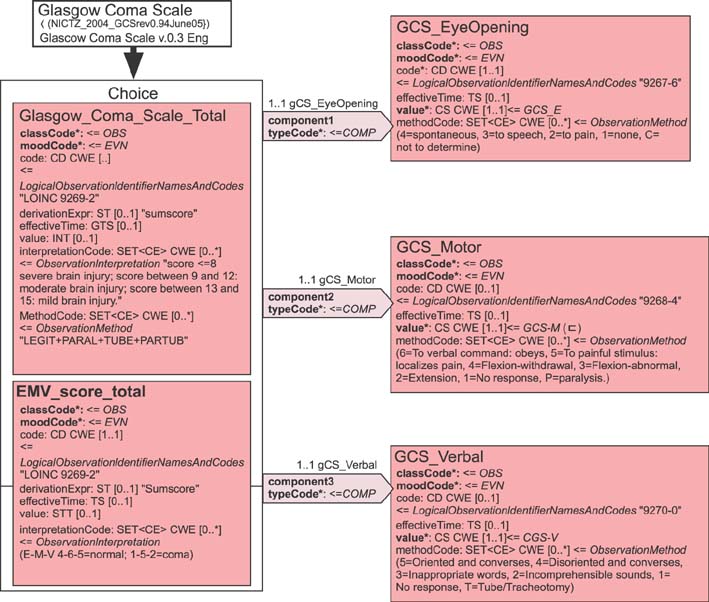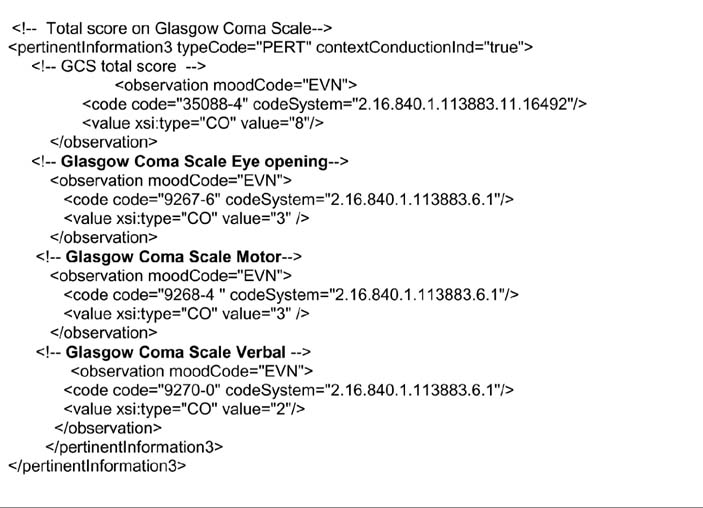Healthc Inform Res.
2014 Jul;20(3):163-172. 10.4258/hir.2014.20.3.163.
Detailed Clinical Models: Representing Knowledge, Data and Semantics in Healthcare Information Technology
- Affiliations
-
- 1Results4Care B.V., Amersfoort, The Netherlands. wgoossen@results4care.nl
- KMID: 2284579
- DOI: http://doi.org/10.4258/hir.2014.20.3.163
Abstract
OBJECTIVES
This paper will present an overview of the developmental effort in harmonizing clinical knowledge modeling using the Detailed Clinical Models (DCMs), and will explain how it can contribute to the preservation of Electronic Health Records (EHR) data.
METHODS
Clinical knowledge modeling is vital for the management and preservation of EHR and data. Such modeling provides common data elements and terminology binding with the intention of capturing and managing clinical information over time and location independent from technology. Any EHR data exchange without an agreed clinical knowledge modeling will potentially result in loss of information.
RESULTS
Many attempts exist from the past to model clinical knowledge for the benefits of semantic interoperability using standardized data representation and common terminologies. The objective of each project is similar with respect to consistent representation of clinical data, using standardized terminologies, and an overall logical approach. However, the conceptual, logical, and the technical expressions are quite different in one clinical knowledge modeling approach versus another. There currently are synergies under the Clinical Information Modeling Initiative (CIMI) in order to create a harmonized reference model for clinical knowledge models.
CONCLUSIONS
The goal for the CIMI is to create a reference model and formalisms based on for instance the DCM (ISO/TS 13972), among other work. A global repository of DCMs may potentially be established in the future.
Keyword
MeSH Terms
Figure
Cited by 1 articles
-
Dynamic Demand-Centered Process-Oriented Data Model for Inventory Management of Hemovigilance Systems
Mahnaz Sohrabi, Mostafa Zandieh, Behrouz Afshar Nadjafi
Healthc Inform Res. 2021;27(1):73-81. doi: 10.4258/hir.2021.27.1.73.
Reference
-
1. Huff SM, Rocha RA, Coyle JF, Narus SP. Integrating detailed clinical models into application development tools. Stud Health Technol Inform. 2004; 107(Pt 2):1058–1062.2. International Organization for Standardization. Health informatics: detailed clinical models, characteristics and processes. Geneva, Switzerland: International Organization for Standardization;2014. (ISO/PRF TS 13972).3. Goossen W, Goossen-Baremans A, van der Zel M. Detailed clinical models: a review. Healthc Inform Res. 2010; 16(4):201–214.
Article4. Rector AL, Nowlan WA, Kay S, Goble CA, Howkins TJ. A framework for modeling the electronic medical record. Methods Inf Med. 1993; 32:109–119.5. Goossen W. Detailed clinical models: kennis en semantiek weergeven met UML en XML. <!Element>. 2011; 17(1):11–16.6. Beale T. Archetypes and the EHR. Stud Health Technol Inform. 2003; 96:238–244.7. van der Kooij J, Goossen WT, Goossen-Baremans AT, Plaisier N. Evaluation of documents that integrate knowledge, terminology and information models. Stud Health Technol Inform. 2006; 122:519–522.8. Center for Interoperable EHR (CiEHR). Clinical Contents Manager [Internet]. Seoul, Korea: CiEHR;c2012. cited at 2012 Oct 16. Available from: http://www.clinicalcontentsmodel.org.9. Goossen W. Representing knowledge, data and concepts for EHRS using DCM. Stud Health Technol Inform. 2011; 169:774–778.10. Blobel B. Architectural approach to eHealth for enabling paradigm changes in health. Methods Inf Med. 2010; 49(2):123–134.
Article11. Object Management Group. Model Driven Architecture (MDA). Needham (MA): Object Management Group;c2014. cited at 2014 Jul 1. Available from: http://www.omg.org/mda.12. Goossen W, Chang W. Clinical knowledge modeling using Detailed Clinical Models. In : Proceedings of the 23rd International CODATA Conference; 2012 Oct 27-31; Taipei, Taiwan.13. Goossen WT, Goossen-Baremans A. Bridging the HL7 template: 13606 archetype gap with detailed clinical models. Stud Health Technol Inform. 2010; 160(Pt 2):932–936.14. Teasdale G, Jennett B. Assessment of coma and impaired consciousness: a practical scale. Lancet. 1974; 2(7872):81–84.15. Health Level Seven International. Fast Healthcare Interoperability Resources (FHIR) [Internet]. Ann Arbor (MI): Health Level Seven International;c2014. cited at 2014 Jul 1. Available from: http://wiki.hl7.org/index.php?title=FHIR.16. International Health Terminology Standards Development Organisation. SNOMED CT [Internet]. Copenhagen, Denmark: International Health Terminology Standards Development Organisation;c2014. cited at 2014 Jul 1. Available from: http://www.ihtsdo.org/snomed-ct/.17. Regenstrief Institute Inc. LOINC [Internet]. Indianapolis (IN): Regenstrief Institute Inc.;c2014. cited at 2014 Jul 1. Available from: http://loinc.org/.18. Cuggia M, Bayat S, Rossille D, Poulain P, Pladys P, Robert H, et al. Comparing the APGAR score representation in HL7 and OpenEHR formalisms. Stud Health Technol Inform. 2009; 150:250–254.
- Full Text Links
- Actions
-
Cited
- CITED
-
- Close
- Share
- Similar articles
-
- Detailed Clinical Models: A Review
- Development of Detailed Clinical Models for Nursing Assessments and Nursing Interventions
- The Development of Clinical Document Standards for Semantic Interoperability in China
- Implementation of a Next-Generation Electronic Nursing Records System Based on Detailed Clinical Models and Integration of Clinical Practice Guidelines
- Healthcare Information Technology: A Systematic Mapping Study

